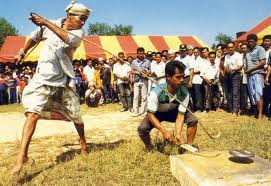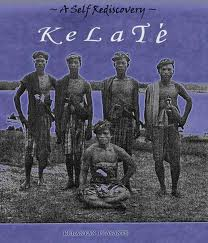Top-spinning in Kelantan is basically an adult affair. Contests are held between pairs of men to determine how long one´s top, or "gasing",
can spin. After the initial throw of the spin, it is expertly
transferred to a stand, where it is left spinning until it stops.
Finally, there is the traditional pastime of rearing birds for their singing prowess, and then entering them in bird singing contests. This pastime is popular in the northern States as a whole. The bird normally used for this purpose in Kelantan is the merbok. Bull-fighting, which used to be a very popular pastime in Kelantan during the past, is now banned.
Besides the usual religious festivals celebrated in the country as a whole, Kelantan is internationally renowned for hosting the International Kite Festival at Pantai Sri Tujuh near Tumpat. This is an annual event which attracts participants from all over the world.
































